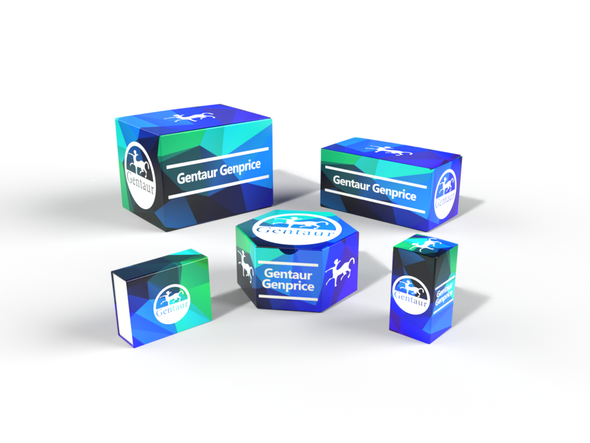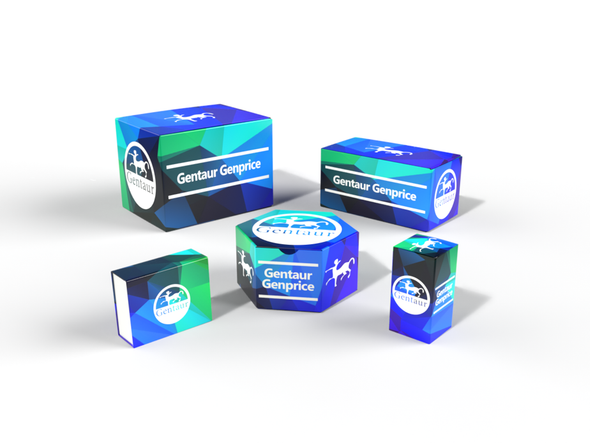Gentaur SPARCL
Human CA 19-9 SPARCL™ Assay | CA19-SP-20
- SKU:
- 198-CA19-SP-20-GEN
- Availability:
- IN STOCK
Description
FOR RESEARCH USE ONLY
INTRODUCTION
CA 19-9 is a carbohydrate antigen (Sialyl-LewisA) found on the MUC1 protein that is expressed and shed from some tumor cells. Increased serum levels of CA 19-9 may be associated with pancreatic and gastrointestinal cancer.
PRINCIPLE OF THE ASSAY
The CA 19-9 SPARCL™a (Spatial Proximity Analyte Reagent Capture Luminescence)1 assay uses HRP and acridan conjugates of a CA 19-9 monoclonal antibody. When the HRP and acridan conjugated conjugates bind to CA 19-9 they are brought into molecular proximity. With the addition of hydrogen peroxide, HRP catalyzes oxidation of proximal acridan molecules causing a flash of chemiluminescence. Acridan conjugated antibodies distant from HRP produce no signal. This principle allows the development of a homogeneous assay that allows rapid measurement of CA 19-9. The HRP and acridan conjugated antibodies are mixed with standards and diluted samples in wells of the white 96-well SPARCL™ plateb. After incubation for 30 minutes on a shaker at 25°C and 150 rpm, the plate is placed into a luminometer. Trigger solution containing hydrogen peroxide is injected into each well and luminescence is immediately measured. The concentration of CA 19- 9 is proportional to luminescence and is derived from a standard curve.
MATERIALS AND COMPONENTS
Materials provided with the kit:
• Anti-CA 19-9 HRP conjugate Store ≤ -70°C
• Anti-CA 19-9 acridan conjugate Store ≤ -70°C
• CA 19-9 stock Store ≤ -70°C
• Diluent; CSD50-1, 2 x 50 ml
• Trigger solution; TS7-1, 7 ml
• White SPARCL™ plate (12 x 8-well)
• Clear untreated 96-well plate
Materials required but not provided:
• Precision pipettes and tips
• Polypropylene microcentrifuge tubes
• Vortex mixer
• Plate incubator/shaker
• Luminometer capable of simultaneous injection/measurement
• Graphing software
STORAGE
Store the HRP conjugate, acridan conjugate and CRP stock at -70°C (they may be stored at -20°Cfor one week). The remainder of the kit should be stored at 2-8°C. The SPARCL™ plate should be kept in a sealed bag with desiccant and antioxidant. The kit will remain stable for at least six months from the date of purchase, provided that the components are stored as described above.
GENERAL INSTRUCTIONS
1. Please take the time to completely read all instructions before starting your assay. Contact us if you need clarification.
2. All reagents used in the assay should be allowed to reach room temperature (25°C) before use.
3. It is important that standards and samples be added to the SPARCL™ plate quickly. If testing large numbers of samples, rather than pipetting standards and samples directly into the white SPARCL™ plate using a single channel pipettor, we recommend the following. First, pipette an excess volume of standards and samples into appropriate wells of the clear 96- well plate. Then use an 8- or 12-channel multipipettor to quickly and efficiently transfer 50 ml aliquots to the appropriate wells of the white SPARCL™ plate. The wells of the clear plate hold a maximum volume of 300 ml.
4. Follow the sequence of events below when running the assay.










